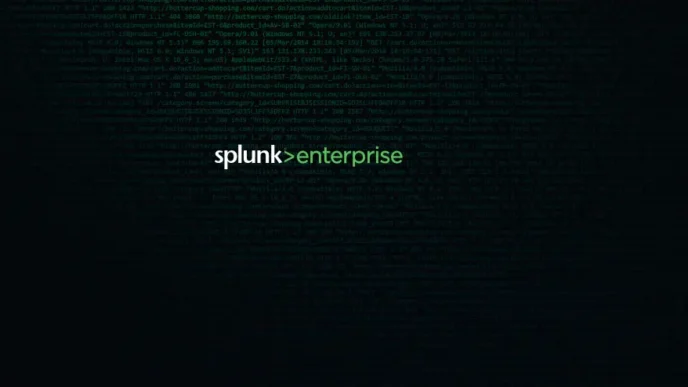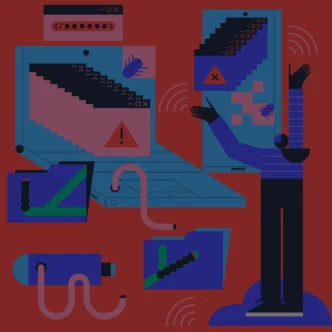Open Source Intelligence (OSINT) has become an indispensable tool for cybersecurity professionals. OSINT Analysts use publicly available data to uncover threats, support incident response, assess digital risk, and inform decision-making. With governments, private corporations, and NGOs investing heavily in proactive threat intelligence, the demand for OSINT expertise is experiencing sustained growth.
This role combines technical proficiency, investigative rigor, and legal awareness — making it a dynamic and increasingly essential position in modern cyber operations and regulatory compliance frameworks such as GDPR, CCPA, and NIS2.
Job Description and Responsibilities
OSINT Analysts collect, analyze, and synthesize publicly available information to identify threats, uncover adversarial activities, and support investigations. They often collaborate with cybersecurity teams, legal departments, law enforcement, and intelligence professionals.
Key Responsibilities:
- Identify and collect data from publicly accessible sources (social media, forums, deep/dark web, WHOIS, public records).
- Correlate information to detect threats, disinformation campaigns, fraud, or malicious activity.
- Produce detailed intelligence reports and risk assessments for internal or client use.
- Monitor adversary behavior and geopolitical events impacting digital security.
- Ensure compliance with data protection and privacy laws during investigations.
- Collaborate with SOC teams, threat hunters, and digital forensics experts.
- Maintain and update OSINT tools, methodologies, and sources.
Education Requirements
While not always mandatory, a degree is often preferred for OSINT analyst roles, particularly by government and defense contractors.
Common Degree Fields:
- Cybersecurity
- Criminal Justice
- Intelligence Studies
- Political Science or International Relations (with cyber focus)
- Computer Science
- Digital Forensics
Some analysts come from journalism or linguistics backgrounds, especially in disinformation or geopolitical monitoring roles.
Key Certifications
| Certification Name | Issuer | Difficulty | Renewal |
|---|---|---|---|
| Certified Cyber Intelligence Professional (CCIP) | McAfee Institute | Intermediate | 2 years |
| GIAC Open Source Intelligence (GOSI) | GIAC / SANS | Advanced | 4 years |
| Certified Ethical Hacker (CEH) | EC-Council | Intermediate | 3 years |
| OSINT Practitioner Certification | OSINT Combine (Australia) | Beginner | 3 years |
| Intelligence Fundamentals Professional Certification (IFPC) | U.S. Department of Defense | Intermediate | 2 years |
Essential Skills for OSINT Analysts
Technical Skills:
- OSINT tools (Maltego, Spiderfoot, Shodan, Recon-ng, TheHarvester)
- Threat intelligence platforms (TIPs)
- Scripting and automation (Python, PowerShell)
- VPNs, Tor, and anonymous browsing techniques
- Dark web monitoring
- Metadata analysis
- Data correlation and visualization
Legal and Compliance Knowledge:
- GDPR, CCPA, NIS2, HIPAA, and global data privacy frameworks
- Chain of custody and legal admissibility of evidence
- Intellectual property and copyright laws
- Ethics of surveillance and data collection
Interpersonal and Analytical Skills:
- Investigative mindset and critical thinking
- Report writing and intelligence briefing
- Foreign language proficiency (often beneficial)
- Collaboration across departments (legal, HR, IT security)
- Resilience under pressure, particularly in geopolitical crises or incident response scenarios
Career Progression Path
| Role Level | Typical Titles |
|---|---|
| Entry-Level | Junior OSINT Analyst, Threat Intel Intern, SOC Analyst |
| Mid-Level | OSINT Analyst, Cyber Threat Intelligence Analyst |
| Senior-Level | Senior Intelligence Analyst, Lead OSINT Analyst |
| Managerial/Executive | Cyber Threat Intelligence Manager, Director of Intelligence, CISO |
Industries and Employers
OSINT Analysts are employed across a wide spectrum of industries. Some of the most common include:
- Government & Intelligence Agencies: NSA, GCHQ, FBI, MI5, EUROPOL
- Cybersecurity Vendors & MSSPs: Recorded Future, Mandiant, Palo Alto Networks
- Financial Services: Banks, fintech, fraud prevention
- Defense Contractors: Raytheon, BAE Systems, Lockheed Martin
- Corporate Security Units: Multinational corporations, especially those with global risk exposure
- NGOs & Investigative Journalism: Bellingcat, Amnesty International, ICIJ
How to Get Started in OSINT
Step-by-Step Guide:
- Build Foundational Knowledge:
- Study cybersecurity basics through online platforms (e.g., TryHackMe, Hack The Box, Coursera).
- Learn legal and ethical aspects of data collection.
- Develop OSINT Skills Practically:
- Start with free tools like Google Dorks, WHOIS, and Shodan.
- Practice CTFs or challenges from Trace Labs or Hacktoria.
- Earn Certifications:
- Begin with beginner-level courses and work toward intermediate or advanced certifications.
- Create a Portfolio:
- Publish sanitized OSINT case studies or investigations (blog, GitHub, Medium).
- Contribute to public investigations or volunteer for nonprofit research groups.
- Apply to Entry-Level Jobs:
- Look for SOC analyst or threat intelligence internships.
- Network at cybersecurity conferences or OSINT-specific communities (OSINT Curious, NCPTF).
Common Challenges Faced by OSINT Analysts
- Data Overload: Managing vast quantities of disparate and unstructured data.
- Legal Ambiguities: Navigating different jurisdictions and privacy laws.
- Attribution Difficulty: Confirming the source of cyber threats or actors.
- Tool Reliability: Constant need to update tools and techniques as platforms evolve.
- Ethical Considerations: Ensuring responsible data use and avoiding surveillance overreach.
Global Salary Comparison
| Country | Entry-Level (Annual) | Mid-Level (Annual) | Senior-Level (Annual) |
|---|---|---|---|
| USA (USD) | $60,000 | $90,000 | $130,000+ |
| UK (GBP) | £35,000 | £55,000 | £80,000+ |
| Switzerland (CHF) | CHF 70,000 | CHF 100,000 | CHF 140,000+ |
| France (EUR) | €35,000 | €55,000 | €80,000+ |
| Australia (AUD) | A$70,000 | A$100,000 | A$140,000+ |
Job Market Demand and Hiring Trends
According to CyberSeek (U.S.) and recent LinkedIn hiring trends:
- OSINT roles have grown by over 22% in the past 2 years.
- Demand is strongest in sectors like finance, defense, and tech.
- Remote work opportunities have increased significantly, driven by global investigations and digital risk monitoring.
- Cybersecurity frameworks (NIST, MITRE ATT&CK) now often include OSINT processes as core components of threat detection and attribution.
OSINT is also becoming a core module in threat intelligence teams, particularly in larger organizations developing their own CTI (Cyber Threat Intelligence) divisions.
Conclusion: A Role for the Curious, the Committed, and the Ethical
The OSINT Analyst role is a compelling choice for those who thrive on investigation, digital sleuthing, and global awareness. Whether your passion lies in defending organizations from cyber threats, tracking geopolitical disinformation, or building ethical intelligence systems, this role offers meaningful work at the intersection of technology and human behavior.
With a clear path to senior intelligence and security leadership positions, a growing job market, and a high-impact mission, now is an ideal time to enter the OSINT profession. Start by building your knowledge base, practicing real-world investigations, and positioning yourself as a capable and ethical analyst ready to meet today’s cybersecurity challenges.














